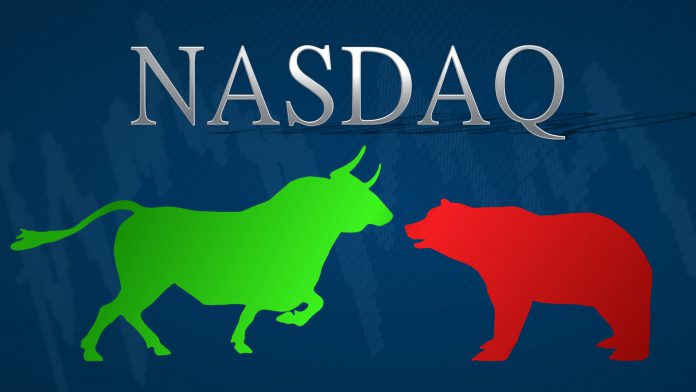Anxiety is fading as the stock market enters the homestretch for 2020 with the wind at its back.
The S&P 500 rose 2.3 percent in the holiday-shortened period between Friday, November 20, and Friday, November 27. It was the third gain in the last four weeks and planted the index at new all-time closing high.
Perhaps more importantly, Cboe’s volatility index ($VIX.X) closed below 21 for the first time since the coronavirus pandemic slammed markets in late February. Safe havens like gold, bonds and the U.S. dollar also crumbled — another sign of fear abating.
Meanwhile risk-on assets advanced. Copper jumped to a seven-year high. Crude oil futures closed at their highest levels since mid-March. Emerging markets, especially Latin American stocks, surged. Those are potential signs of confidence returning.

Breakout in the Nasdaq?
Hopes of the economy reopening have drawn investors back to beaten-down sectors like energy, airlines and cruise ships this month. It’s also reduced enthusiasm for stocks like Amazon.com (AMZN), holding back the Nasdaq-100 ($NDX.X).
| Biggest Gainers in the S&P 500 Last Week | |
| Carnival (CCL) | +24% |
| Occidental Petroleum (OXY) | +23% |
| Apache (APA) | +22% |
| American Airlines (AAL) | +20% |
| Norwgian Cruise Line (NCLH) | +18% |
Last week, however, saw a potential turn as the technology-heavy index outperformed the S&P 500 for the first time this month. It broke a potential trendline in place since early September. NDX is also pushing against previous peaks from mid-October and early November.
Will sentiment shift back toward the Nasdaq? There could be some reasons to think it will.
First, the Nasdaq-100 and technology have been the year’s top performers by a wide margin. That creates the potential for window-dressing into December — a process when institutional investors stick with leaders through the end of a calendar year.
Second, despite the vaccine news, coronavirus infections are still rising. Public-health officials see the pandemic accelerating in the winter. That could revive interest in e-commerce, software and streaming-video companies.
Third, technology companies are planning initial public offerings (IPOs) in December. The list includes AirBnB, DoorDash and Roblox. High-profile deals like that could also draw attention back to the sector.
Fourth, minutes from the last Federal Reserve meeting showed policymakers may buy longer-dated Treasury bonds. That would “flatten the yield curve” and could reduce the appeal of “value stocks” in the financial sector. Low rates also tend to support high-multiple growth stocks.

Jerome Powell in Congress
Investors may learn more when Fed Chairman Jerome Powell testifies in Congress tomorrow and Wednesday. His appearance will be one of several important economic events this week.
| Biggest Decliners in the S&P 500 Last Week | |
| Gap (GPS) | -11% |
| Bio-Rad Laboratories (BIO) | -6.1% |
| Hormel Foods (HRL) | -5.8% |
| Catalent (CTLT) | -5.7% |
| Best Buy (BBY) | -5.5% |
Today brings pending home sales. Tuesday features the Institute for Supply Management’s manufacturing index, which crushed estimates last month. Powell speaks at 10 a.m. ET. Construction spending is also due. Salesforce.com (CRM) reports earnings in the afternoon.
ADP’s private-sector payrolls report is the big event Wednesday morning. Crude oil inventories follow later in the morning.
Thursday’s items include initial jobless claims and ISM’s service-sector index. Dollar General (DG), Kroger (KR), DocuSign (DOCU), Marvell Technology (MRVL) and Ulta Beauty (ULTA) report earnings.
The week concludes with the Labor Department’s important non-farm payrolls report on Friday morning.


























